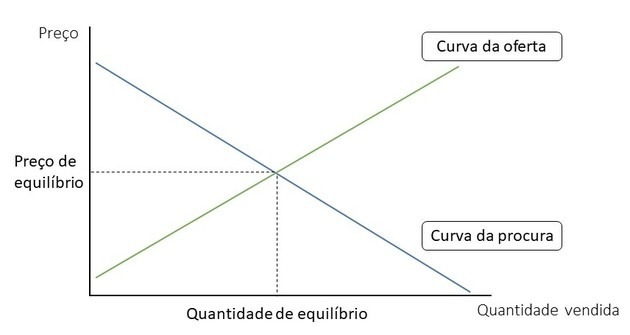The capital market is a system formed by a set of institutions that distribute assets - also called mobile values.
These assets are made available by companies that need capital (money) to carry out their operations. Investors buy these assets as a form of investment as they will receive interest and dividends.
For companies, the capital market is an alternative to bank loans, whose interest is high.
For the population, it is an investment option that, despite offering more risk, offers more profitability than fixed income options - as is the case with savings.
The structure of the capital market
The capital market is not a physical structure where you can go to buy securities. This market is made up of several institutions, the main one being the Stock Exchange, which in Brazil is called the BM&FBovespa.
In addition, they comprise the capital market, the securities brokers and awesome Financial Institution authorized, which mediate between people interested in investing and institutions offering assets.
The main assets traded on the capital market are shares, debentures and commercial papers.
- Actions: the shares are a fraction of the company. The investor, upon acquiring these fractions, becomes a partner in the organization and receives profits and dividends for them.
- Debentures: debentures are loans made by investors to a company. That is, the company that needs capital issues debt securities and the investor becomes the creditor of this company, which will receive, in addition to the principal payment within the validity period, periodic interest on the amount borrowed.
- Commercial Papers: also known as promissory notes, the commercial papers they are debt securities, just like debentures. Companies usually offer commercial papers when they need to raise funds quickly and want to escape bank interest.
How does the capital market work?
When a company needs money to make investments or make payments, there are three options for obtaining resources: loans, reinvestment of profits and capitalization in the capital market.
To avoid high bank interest rates, companies can choose to issue stocks and bonds on the capital market.
Investors who are in the capital market buy these bonds or stocks. Simply put, it's as if investors lend their money to companies, and then receive interest on the amount borrowed - it's a form of investment.
capital market division
primary market
The primary market is where companies looking to raise funds launch their bonds for the first time. On the stock exchange, this offer is called an Initial Public Offering, or IPO (Initial Public Offering).
The shares offered in an IPO have a predetermined value and investors make the purchase with the expectation that the asset will appreciate.
secondary market
The secondary market is where any asset that has been acquired in the primary market can be sold. The secondary market provides liquidity to assets, as it allows an asset to be sold to another investor and returned to the seller in cash form.
Let's say you bought stock in a company today and spent $1,000. After a few days, you want to get this money back and go to the secondary market to sell them.
As a stock is a variable income investment, you will sell at the amount determined on the day of sale, which may be more or less than R$1,000.00.
In the secondary market, assets are not traded between company and investor, as is the case in the primary market. In this case, purchases and sales are carried out between investors.
Stock Exchange (BM&FBovespa)
 BM&FBovespa trading room in São Paulo.
BM&FBovespa trading room in São Paulo.
The stock exchange is a virtual environment where it is possible to acquire securities in initial offers, the IPOs, or sell and buy securities that have already been acquired in the primary market.
In other words, both primary and secondary market operations are carried out on the stock exchange.
In the primary market, investors buy assets directly from the organizations that offer them. And in the secondary market, negotiations for the purchase and sale of assets between investors are carried out.
All operations are done over the internet using a tool called Home brokerand are intermediated in the market by a stockbroker. Despite looking complex, these transactions are performed in a few seconds.
The Brazilian stock exchange, called BMF&Bovespa, is one of the largest exchanges in the world and the largest in Latin America. The purpose of the exchange is to provide investors with a safe and transparent environment for their trading.
Securities Commission (CVM)
The capital market in Brazil is regulated and supervised by the Brazilian Securities Commission - CVM. As it is a market with large fluctuations and risks, in addition to the high financial volume traded, this institution works to provide investors with security.
See also the meaning of ROI.


